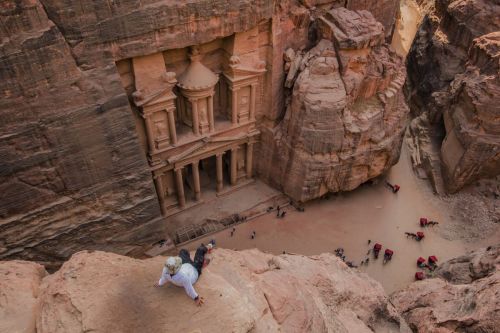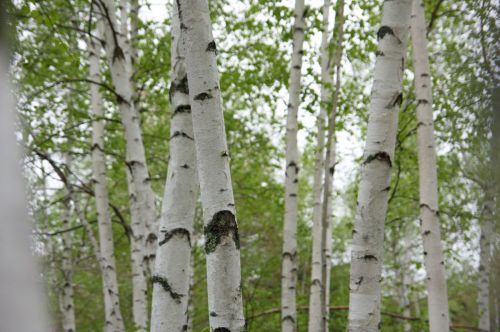It is an evergreen tree with dark green, leathery leaves and distinctive fruits in the form of long, brown pods. Carob fruits are edible and are used in the food, cosmetic and pharmaceutical industries.
It is found in Mediterranean climates and the Middle East. In biblical times it was considered the food of the poor, today it is an excellent substitute for cocoa, full of vitamins, minerals and antioxidants.
The Carob is a typical tree of the Algavre region of southern Portugal, where it is called alfarrobeira and the fruit is alfarroba. These trees also grow in Spain (Andalusia, Murcia, Valencia), Malta, Sicily, Sardinia, southern Croatia, eastern Bulgaria, southern Greece, where they are known as "wooden horns", and in Crete, Samos and Cyprus. They also grow in Israel, where they are called charuv, in Turkey they are known as keçiboynuzu, which means "goat's horn".
This family contains 766 genera and about 19600 species. Legumes growing in the tropics are often found in woody form, while in temperate climates they are mainly herbaceous.
The leaves are 10 to 20 centimeters long, leathery, stiff to the touch, glossy, dark green. They fall every other year in July and are only partially renewed the following spring.
Carob fruits are large pods with a leathery covering, up to 20 centimeters long and 2 centimeters wide. The pod is elongated, straight or curved, and has thickened sutures. It contains soft, brownish flesh with a large number of brown seeds.
The pods develop and ripen throughout the year. When they ripen and fall to the ground, they are eaten by various mammals, including pigs, which scatter carob seeds in their droppings.
These trees prefer well drained sandy loams and do not tolerate wetlands, although the deep root system can adapt to different conditions.
Experiments have been conducted in which young carob trees were able to perform basic physiological functions under high salinity conditions of 40 mmol NaCl/l.
Carob pods consist of pulp, which makes up 90% of the weight, and seeds, which make up 10%. They have a slightly sweet taste because they contain about 1/3 to 1/2 of the sugar in the dry matter.
Until the spread of sugar cane and sugar beets, carob was the only source of sugar for people in the region where these trees grew.
It has been suggested that these trees, like all legumes, may form a symbiotic relationship with Rhizobium to utilize nitrogen from the atmosphere. Ongoing studies have not conclusively proven this. Some have found no root nodules, while others have found nodules containing Rhizobium bacteria. However, isotopic testing of the carob tree's tissues has not confirmed its natural use of atmospheric nitrogen.
The roasted and ground pods are used to make carob flour, which is used in the production of sweets and cakes as a healthy, allergen-free substitute for chocolate.
It contains natural plant proteins and carbohydrates as well as vitamins: B1, B2, B3, B6, C, E, D and A. It also has calcium in its composition, as well as phosphorus, iron, sodium, potassium, zinc and magnesium. It is also rich in powerful antioxidants, especially gallic acid, which has anti-cancer effects. Due to the presence of many valuable nutrients, carob is a must in the diet of athletes. Carob flour does not contain theobromine, which is very harmful to some animals - cats, dogs and horses.
It lowers cholesterol and regulates digestive processes (reduces gastric acidity). It is ideal as an addition to cakes, sweet desserts, yogurts. It goes well with coffee and milk and it is safe for allergy sufferers.
It is also used as a stabilizer to replace fat in low-calorie products or as a gluten substitute. To produce 1 kilogram of flour, it takes 3 kilograms of seeds, which must come from about 30 kilograms of fruit (pods). Seeds are extremely hard, glossy brown seeds are 8 to 10 mm long, 7 to 8 mm wide and 3 to 5 mm thick.
The endosperm is rich in galactomannans (polysaccharides), which make up 88% of its dry weight. Galactomannans are hydrophilic and swell in water. If mixed with other gelling agents, such as carrageenan (carrageenins, polysaccharides derived from red edible seaweed), they can be used to thicken the liquid portion of food.
This is widely used in animal food to achieve a gelatinous texture.
Since it does not contain theobromine or caffeine, it is safe for dogs.
In the past, carob pods were mainly used as animal feed in the Maltese Islands. However, in times of famine or war, they were part of the diet of many Maltese.
Carob pods were also fed to donkeys on the Iberian Peninsula in the past.
It is used as an additive for making alcoholic beverages, compotes, liqueurs.
It is commonly used in gardens in Mediterranean regions, but also in other regions of the world. The tree is especially popular in California and Hawaii.
In some regions of Greece, such as Crete, it is used as firewood. It is also used to make fences, parquet, doors, and because of its hardness and resistance to breakage, it can be used to make tool handles and walking sticks.
It is also used to make slow burning charcoal.
Smaller quantities were produced in Algeria, Tunisia and Israel. The main consumers are the food industry (baby food, ice cream, sauces, cheese, diabetic products, soft drinks), cosmetics and pharmaceuticals, and more recently manufacturers of organic and natural products.
Because carob seeds have a constant average weight of about 200 milligrams, they were used in ancient times as a unit of weight for diamonds. The unit was called the carat - derived from the Greek word keration, meaning carob.
It is mentioned in the Gospel of St. Matthew in the parable of the prodigal son who was forced to eat food intended for pigs. It turns out that in biblical times, carob was not considered a valuable food for humans, but for pigs. It could only be eaten by very poor people; it was the bread of the poor.
Another biblical passage mentions John the Baptist who, while in the wilderness, ate locusts. This is possible because locusts were eaten by the people of that time (only certain types of locusts and only the abdomen) and this was not part of the public debate. Since locusts appeared only periodically in swarms in the desert regions of the Holy Land, it is believed that John the Baptist ate carob.












